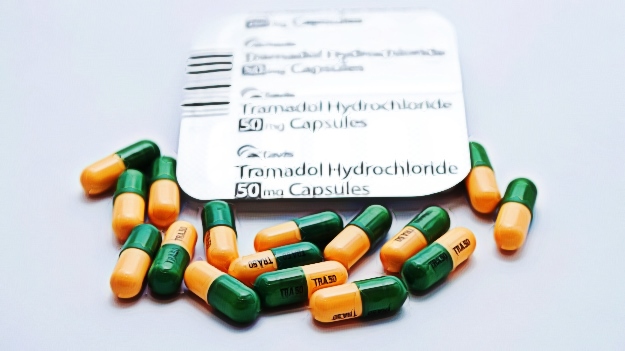In recent years, the American drug crisis has grown far more complex and widespread than ever. From Ketamine to crack cocaine, the number of street and prescription drugs that have proliferated the market and compromised the quality of life of many has shot up far beyond expectations. With new methods and doubled-down efforts being constantly rallied in, it is safe to say that anything and everything is being done to remedy the situation at hand—but it is definitely far from being solved.
Unfortunately, cases of drug abuse and dependency have arrived at a point of near-uncontrollable increase because of the continuous operations of drug rings and their persistent smuggling and production. One look at the news, in fact, is more than enough to understand just how serious the current drug epidemic is, particularly on how widespread the problem has become.
While there is a near-endless assortment of different drugs on the market today, the spotlight, in recent times, has been shone on tramadol—a prescription opioid bearing a crisis of its own.
How long does tramadol last?
Beyond understanding how it works and why people take it in the first place, dealing with the tramadol crisis and its addictive nature entails knowing how long it lasts within the body.

When it comes to understanding the duration of the drug’s presence in the average human’s system, it is critical to look at four particular points of detection when constructing timeframes:
- The saliva
- The blood
- The urine
- The hair
Like any other prescription drug or opioid, the duration of tramadol in the human body’s system manifests in different forms and covers different time spans because of how biology works. Depending on the part of the human body that you’re looking at, you’ll get a different figure or result that will determine how long it will last within your system.
To be better informed about how long tramadol lasts, here’s a look at the standard expected detection timeframes that the drug has:
In Saliva: Tramadol has a relatively longer detection time frame when ingested. Detectable for up to 48 hours in the saliva after it’s taken, mouth-based tests are fairly accurate when it comes to detecting the drug.
In Blood: Similar to saliva, blood holds the presence of the drug in question for up to 48 hours after it’s taken—making it another effective vessel for testing and inspections.
In Urine: Depending on several factors, the presence of tramadol in urine can last anywhere between 24 to 72 hours after it is consumed.
In Hair: Compared to other reference points for detection timeframes, hair holds the presence of such a prescription opioid for an exponentially-longer time. Spanning anywhere between 30 to 90 days (or 1 to 3 months), this particular point stands as the most trusted source for inspections and tests.
Beyond figures, however, understanding how long the prescription opioid lasts or stays in your body also entails understanding the different factors that can affect the duration itself. Although there is an array of different components that you can pinpoint as you estimate the precise amount of time that tramadol stays in your body, there are a few main aspects to consider:
Dosage: Generally defined as the amount of tramadol that you took, the duration is one of the more impactful factors that will highly influence the length of time the drug stays in your system. The higher the dose or the amount that is ingested, the longer it will stay in one’s system.
Frequency: The concept of frequency refers to how often you take tramadol—another crucial factor that largely influences the length of time in your system. Shorter doses, for instance, will stay in your system for the shortest amount of time; conversely, taking the prescription medication regularly or going above the recommended dose ensures that it stays in your system for a longer period of time.
Route of administration: Another critical factor that determines the overall length of time that opioids stay in your system in the form in which you consumed them. In the case of tramadol, drops or injections last far shorter in the human body than pills.
The half-life dilemma—the half-life of tramadol
Often looped into the tramadol addiction discussion, the idea of the prescription opioid’s half-life is heavily discussed because of how it can scientifically explain the overall duration of the drug’s presence in the body.
Depending on the method of administration, the half-life of the opioid can vary. In the case of injections and drops, the half-life of these methods is set around anywhere between 30 to 60 minutes—resulting in a wear-off of effects around the four to six-hour mark. On the other hand, time-release or slow-acting forms of the opioid (such as tablets and capsules) have a longer half-life, ranging anywhere between 12 to 24 hours, essentially staying longer in the body.
What is tramadol?
Tramadol, based on medical and pharmaceutical documentation, is best defined as a prescription opioid that is used to treat moderate to severe pain.
Often sold in the American market under the names Conzip and Ultram, the prescription drug in question is prescribed for proper pain management after surgery. Apart from post-surgical procedures, however, it can also be administered to those dealing with chronic pain that stems from conditions like neuropathy, cancer, and gout, among others.
Like other prescription pills and other drugs that have been linked to fostering dependency issues, tramadol is a habit-forming product. As a matter of fact, a prolonged period of taking the drug leads to a higher likelihood of cultivating addiction—a grave complication that many must be well-aware of.
The mechanisms of tramadol
Similar to the function of prescription pain medications like hydrocodone, codeine, and morphine, tramadol seeks to remedy pain by interacting with pain receptors and helping manage sensations.
At its most fundamental, the drug in question works mainly by binding itself to opioid receptors in the brain to block pain signals from passing through. Aside from pain relief through opioid receptor activation, effective treatment with this type of prescription medication is also carried out by increasing the effects of serotonin and norepinephrine.
Tramadol high
Much like codeine or other prescription opioids, tramadol can get one high, even if it is taken contrary to what is prescribed by a medical professional. Given the fact that the mechanism of the drug involves the increase of serotonin and norepinephrine, it’s easy to see why many have turned to abusing it.

Tramadol’s side-effects
Whenever tramadol is abused, it is worth noting that there is a series of both short and long-term side-effects that take place.
In the case of short-term effects, the average person can experience dizziness, a loss of appetite, excessive sweating, nausea, diarrhea, and constipation. On the other hand, the most notable long-term side-effects of tramadol abuse are brain damage and seizures—which is why it’s critical to seek treatment as soon as possible from addiction centers near you.
Tramadol withdrawal
After the body is exposed to an extended period of tramadol abuse, a sudden drawback on a regular (or excessive) intake will act as a catalyst for withdrawal symptoms to take place. In any case of withdrawal, there are different symptoms that one may end up experiencing, such as:
- Vomiting
- Dizziness
- Mood swings
- Flu-like symptoms
- Anxiety
- Hallucinations
- Depersonalization
- Intense bouts of paranoia
Conclusion
When it comes to dealing with tramadol and its various implications, one of the most notable factors that you’ll need to account for when caring for yourself or a loved one is the amount of time it stays in one’s system. Through the help of this guide, you can approach the process of seeking the right kind of care in the most informed way possible!
Source:




